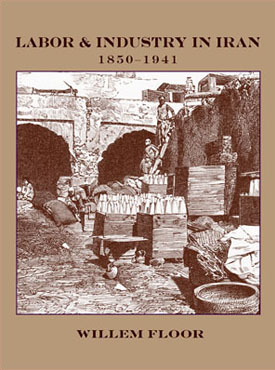About the Book
In the nineteenth century, Iranian reformers wanted to create an independent, modern state that could stand on its own feet. However, constrained by foreign influence, ignorance, and inexperience, their efforts at industrialization were an expensive failure. When a modernizing regime took over the country in 1925, it began the most interesting example of a state-directed effort at economic organization in the Middle East. Iran was able to lift itself up by its bootstraps by financing its own very capital intensive industrialization program without borrowing from abroad. But the people of Iran paid for their nation’s modernization through heavy taxation, bad living conditions and dictatorial rule. And although unionization of labor failed, and bad working conditions, low wages and lack of labor laws remained, the much reviled Reza Shah had ironically been able to realize the dreams of the nineteenth and early-twentieth-century reformers.
Willem Floor uses primary sources and documents, as well as statistics, to analyze the costs and benefits of Iran’s efforts toward industrial modernization from the 1850s to 1941. This study is essential reading for anyone interested in the details of the economic history of modern Iran.
About the Author
Willem Floor studied development economics and non-western sociology, as well as Persian, Arabic and Islamology from 1963-67 at the University of Utrecht (the Netherlands). He received his doctoral degree from the University of Leiden in 1971. Since 1983, Dr. Floor has been employed by the World Bank as an energy specialist. Throughout this time, he has published extensively on the socio-economic history of Iran. His books include: Public Health in Qajar Iran, Agriculture in Qajar Iran, and The History of Theater in Iran, as well as, The Persian Gulf: A Political and Economic History of 5 Port Cities, 1500-1730, its second volume, Persian Gulf: The Rise of the Gulf Arabs, 1747-1792, third volume, The Rise and Fall of Bandar-e Lengeh, the fourth volume, Bandar Abbas: The Natural Gateway of Southeast Iran, and the fifth volume, The Persian Gulf: Links with the Hinterland Bushehr, Borazjan, Kazerun, Banu Ka’b, & Bandar Abbas. He has also published, Travels Through Northern Persia, 1770-1774, Titles and Emoluments in Safavid Iran, and A Social History of Sexual Relations in Iran; Labor and Industry in Iran, 1850-1941; Guilds, Merchants and Ulama in 19th Century Iran; The Rise and Fall of Nader Shah; Games Persians Play. His translations include: Samuel Gottlieb Gmelin’s Travels Through Northern Persia 1770–1774 , and with Hasan Javadi, Abbas Qoli Aqa Bakikhanov’s The Heavenly Rose-Garden: A History of Shirvan & Daghestan; Evliya Chelebi’s Travels in Iran and the Caucasus, 1647 and 1654; A Man of Two Worlds: Pedros Bedik in Iran, 1670–1675, The Persian Gulf: The Hula Arabs of The Shibkuh Coast of Iran, and The Persian Gulf: Dutch-Omani Relations A Commercial & Political History 1651-1806.








